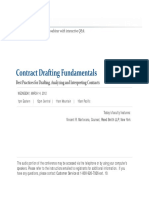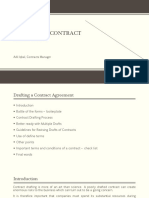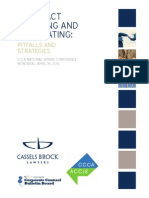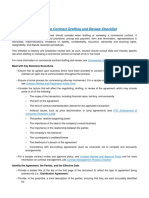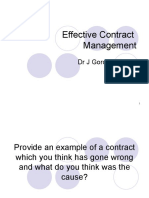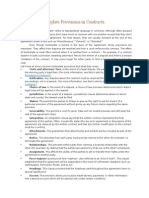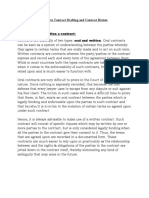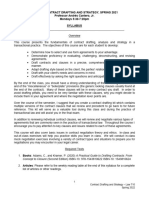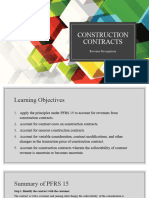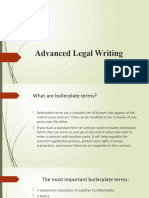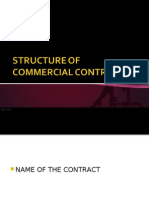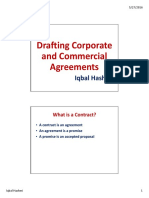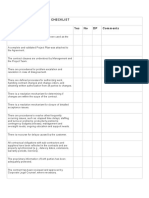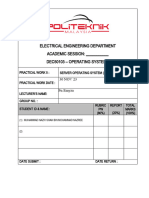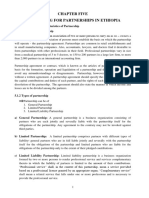100% found this document useful (1 vote)
615 views58 pagesContract Drafting Guide
This document provides a summary of a webinar on contract drafting fundamentals presented by Will Marshall of UBM Law Group. The webinar covered resources for contract drafting, factors to consider in drafting, the anatomy of a contract including typical sections and language used, and tips for clear and precise drafting. It discussed introductory clauses, recitals, business terms, representations and warranties, and other standard contract sections. The goal is to provide concise, unambiguous contracts.
Uploaded by
Shweta PathaniaCopyright
© © All Rights Reserved
We take content rights seriously. If you suspect this is your content, claim it here.
Available Formats
Download as PDF, TXT or read online on Scribd
100% found this document useful (1 vote)
615 views58 pagesContract Drafting Guide
This document provides a summary of a webinar on contract drafting fundamentals presented by Will Marshall of UBM Law Group. The webinar covered resources for contract drafting, factors to consider in drafting, the anatomy of a contract including typical sections and language used, and tips for clear and precise drafting. It discussed introductory clauses, recitals, business terms, representations and warranties, and other standard contract sections. The goal is to provide concise, unambiguous contracts.
Uploaded by
Shweta PathaniaCopyright
© © All Rights Reserved
We take content rights seriously. If you suspect this is your content, claim it here.
Available Formats
Download as PDF, TXT or read online on Scribd
/ 58
